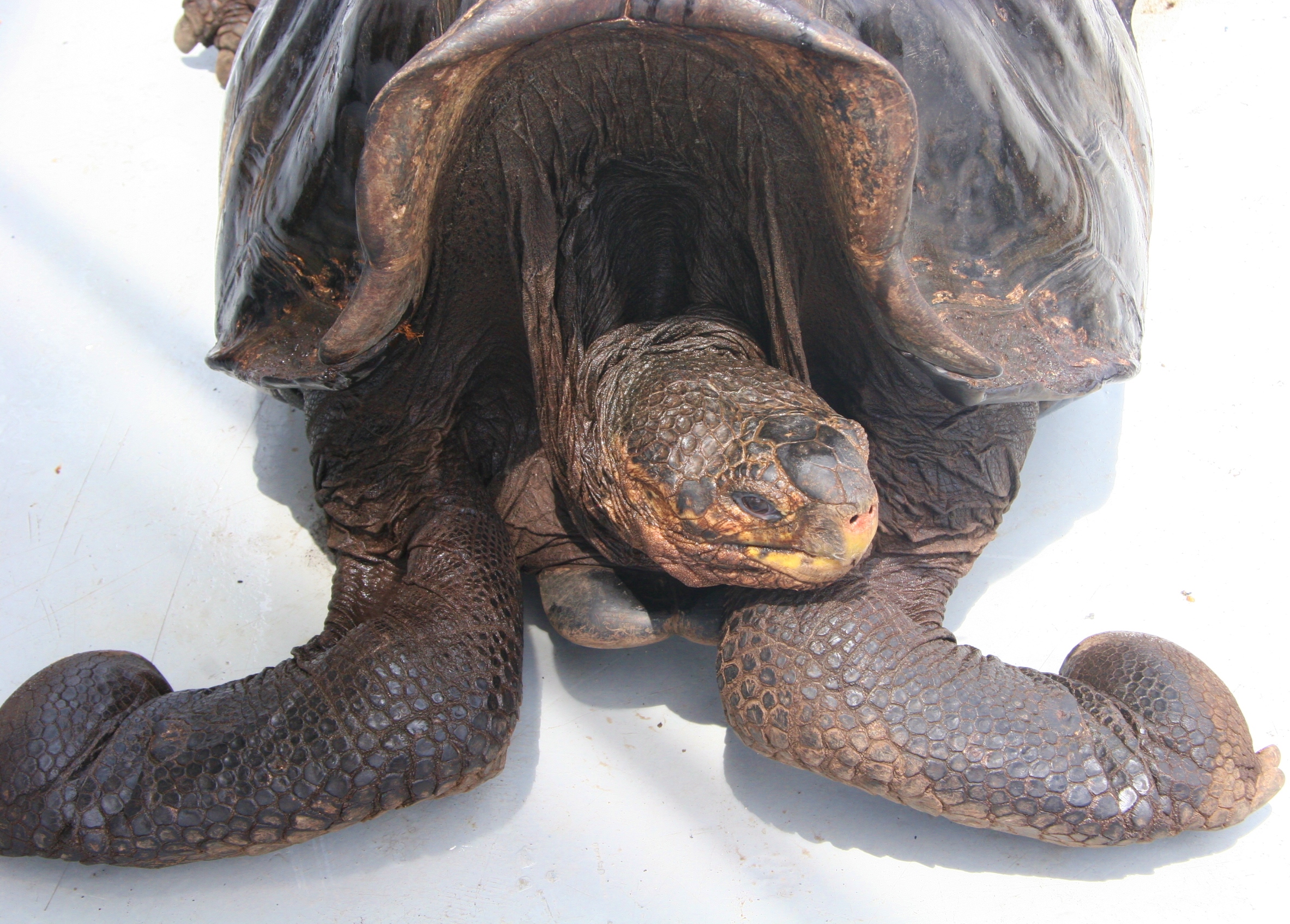December 2015
/When he died in 2012, Lonesome George was mourned around the world as the last of the Pinta species of giant tortoises. But was he?
I spent three weeks in Galapagos attached to a team of scientists and Galapagos National Park rangers dedicated to restoring two tortoise species: Lonesome George's Pinta species and the Floreana species, extinct for 150 years. After making the 14-hour boat trip from Santa Cruz Island to Wolf Volcano – one of the wildest and most remote reaches of the archipelago – we broke into teams of three or four to search for animals with the genetic potential to bring back these species through a captive breeding program.
Every morning I traversed the loose lava on the arid lower flanks of the volcano, which erupted in May. Every afternoon I returned to the Sierra Negra to observe the tortoises captured by teams higher on the mountain and arriving on the boat by helicopter.
Wolf Volcano
I first wrote about this project for National Geographic online. Following is a blog I wrote for Galapagos Conservancy, which sponsored the trip with Galapagos National Park:
A giant tortoise is bigger than a bale of hay and moves at the pace of its proverbial racing ancestor. Why is finding one so hard?
I am thrashing through the thickets of lower Wolf Volcano, flailing at vines with three-inch spines and trying to keep up with Secundino Masaquizo, a wiry Galapagos National Park mariner. He has an uncanny ability to locate stable footing on the wobbly lava and slip unscathed past plants that seem bent on grabbing me. I concentrate on keeping him in sight – more as a survival tactic than a hedge on finding a tortoise.
I am a journalist, lured to this wild and remote corner of the Galapagos Islands by an unprecedented scientific commitment to recover Pinta and Floreana giant tortoises, both officially extinct species. As a first-timer to Galapagos, the odd and utterly unfamiliar flora and fauna I confront on this initial day of exploration seem more weird than wonderful. Every plant has something to offer, and for me, the invasive species, none of the hand-outs is hospitable. The first land iguana I startle is more frightening than fascinating. And why are all the tortoises so elusive?
Even knowing in advance what I learned in those first four hours on Wolf would not have deterred me. When Linda Cayot, Galapagos Conservancy science advisor, contacted me about this 10-day expedition I was in the midst of writing about the sixth mass extinction. Who wouldn’t augment that reality with a chance to participate in an extinct species restoration project?
My team: Joe Flannagan, James Gibbs, Gisella Caccone and Secundino Masaquizo
So day after day I gladly scramble across the lava following James Gibbs, a soft-spoken professor of conservation biology and science partner with the Galapagos Conservancy whose passion for reversing tortoise extinction inspires this expedition. Ahead of me I can hear the fetching Italian accent of Gisella Caccone, a Yale geneticist who has devoted decades to uncovering the DNA footprint of Galapagos tortoises. And there's no mistaking the booming voice of Joe Flanagan, chief veterinarian at the Houston Zoo, who combines extraordinary knowledge of Galapagos species with a particular devotion to giant tortoises. I am crawling through thorny tortoise tunnels with the species’ most dedicated scientists. If only we could find just one of the wily reptiles!
That afternoon we are rewarded on board Sierra Negra, the Galapagos National Park ship that has brought us to Wolf. The first of 32 tortoises found by other teams, combing higher on Wolf's volcanic flanks, arrives on board by helicopter. James, Gisella and Joe work with impressive efficiency, turning the deck into a makeshift science lab where they label, measure and take blood samples for later genetic analysis. These tiny drops in a tube will measure the success of the expedition, and may ultimately determine the future Pinta and Floreana giant tortoise species.
My second morning’s search on Wolf rewards us with the thrill of discovery: our group’s first giant tortoise. James yells, "Tortuga," quickly muttering "don't get your hopes up." A tortoise the size of a salad plate is hunkered on a smooth sheet of lava scattered with dried leaves. It is too young to determine its gender or whether it will develop the flared carapaces typical of Pinta and Floreana tortoises. Still, I am elated, knowing that this youngster all alone in this harsh place could be the ancestor of Lonesome George or the even longer lost Floreana tortoises.
Over the next six days we find many small tortoises among the scrub. They transform my perception of Wolf’s lower arid slopes. Beneath the brush I begin to see mats of moist soil that sound hollow when I thump them: nests dug by females laying their eggs in these lowlands before moving upslope. Soon I see nests everywhere; it’s like learning a new word. These unstable piles of lava, those ankle-grabbing vines and arm-stabbing thorns are protecting a gigantic tortoise nursery. What seemed hostile to me represents safety for tortoises by evolutionary design. Here the second cousins of Lonesome George will hatch; some will survive to mature and eventually mate. A few may play their part in restoring the species of their ancestors.
I leave Wolf Volcano grudgingly, reluctant to relinquish the grip of this place so exquisitely suited to perpetuating the creatures that have found their way here. Before stepping through the fringe of mangroves to the lava-strewn beach, I do a quick bow: To the tortoises that promise the hope of restoring extinct species; to the habit that nourishes them; and to the scientists devoted to their conservation.






